MCR Safety has over forty years of experience as a leader in the field of personal protective equipment (PPE). Our assortment of offerings includes gloves, glasses, and garments which are made from the highest quality materials available to ensure maximum safety, comfort, and style.
When you're on the job, every precaution should be taken to ensure the safety of you and others. While proper training and hazard assessments go a long way in this, accidents still happen, and some hazards are unavoidable. When you work in a dangerous position, you need all the help you can get to stay safe.
Perhaps most risky are the jobs where workers face several different kinds of hazards at once. For instance, workers who find themselves doing jobs that create the risk of burns in conditions with poor visibility face multiple dangers they must contend with to get the job done. They can't be looking over their shoulders, watching for oncoming motor vehicles, while carefully welding or fixing an electrical wire. Instead, these workers rely on a unique combination of flame-resistant (FR), high-visibility PPE.
MCR Safety recognizes that workers face risks of thermal hazards combined with the disadvantage of invisibility across multiple industries. To help these workers avoid injuries, they offer a selection of hi-vis FR clothing that protects workers from burns and keeps them seen, too. Their hi-vis FR products are designed so that you can continue performing your job with protection and peace of mind.
Below, MCR Safety highlights the importance of hi-vis FR protection and covers some of their top-selling hi-vis flame-resistant options.
Importance of FR Clothes
Do you work in an industry where FR clothes are the norm? Those who work in the utility and oil and gas industries know the importance of FR protection. They work in environments where flames are often present. For instance, workers in oil and gas extraction face a constant risk of fire and explosions due to the potential ignition of flammable well gasses and vapors. Electrical workers run the risk of burns from electric arc flash with possible temperatures as high as 35,000°F.
Flame-resistant clothing effectively reduces the risk of injury from flash fire, arc flash, and open flame hazards. FR clothing is designed to self-extinguish when exposed to flame, reducing the extent of burns and giving workers a chance to escape. It also doesn't melt and provides thermal insulation from heat. While no clothing is entirely fireproof, FR PPE drastically cuts down on the number and severity of burn injuries.
FR clothing is especially important in industrial applications where employees face dangerous fire hazards. One example would be welders, who deal with burns from sparks, flames, and hot spatter daily.
Some other industrial industries MCR Safety highlights on their FR Clothing page that require FR PPE include:
- Chemical manufacturing – flash fires, explosions, and flammable chemicals
- Pulp and paper workers – the threat of combustible dust
- Plastic manufacturing – fires and explosions
- Mining – fires and explosions, plus visibility needs
- Fertilizer plants – plant fire due to ammonium nitrate
- Refineries – flash fires
- Railroads – high-voltage electricity
- Iron and steel mills – combustible materials
It's no wonder that some jobs require FR PPE to be worn. According to the American Burn Association, 13% of all burn injuries are work-related, and fires cost U.S. businesses more than $328 billion a year. Other statistics prove the dangers of flames, combustion, and other heat hazards in the workplace.
It is essential to note one more time that FR clothing is made to self-extinguish when a fire source is removed; it is not fireproof. FR PPE is designed to keep body burns below 50% when exposed to fire hazards, which is the benchmark standard set by NFPA2112. When body burns are at 25% or less, chances of survival from a burn injury are excellent, with survival rates at nearly 90%. Once the body burn percentage exceeds 50%, survival rates drop precipitously, especially for older individuals. That is why all PPE manufacturers test FR clothing to the NFPA 2112 standard.
Importance of Hi-Visibility Clothing
When you work in an environment with potential low-light conditions or around motor vehicles, everything you do comes with the added danger of not being seen. That's why high-visibility clothing is a must for many jobs, especially utility workers who find themselves operating at night. In addition to electrical workers, it's all too easy for an emergency responder, traffic director, construction worker, or similar type of worker to be struck by a vehicle when their clothing blends into the scenery.
High-visibility clothing is made of brightly colored fabrics and reflective materials that make the wearer more visible in all conditions, including dark or low-light conditions and in inclement weather. This, in turn, prevents many accidents. When motorists, heavy-machinery drivers, or other workers see those neon colors on a person, they know to slow down and maneuver around that worker. Wearing high-visibility gear, along with other safety precautions and training, prevents many severe injuries and deaths every year.
The American National Standard Institute (ANSI) established the ANSI/ISEA 107 standard to provide industries with performance guidance around high-visibility safety apparel. Here is a breakdown of the two most popular ANSI high-visibility performance classifications:
Performance Class
Due to the limited differences between Class 1 and general-purpose safety vests, MCR Safety elects only to manufacture rated safety vests starting at Class 2.
- Class 2 visibility is for workers in low-light environments and heavy traffic. When traffic exceeds 25 mph and below 50 mph, Class 2 rated vests are considered ideal. OSHA recognizes highway/road construction work zones as areas where workers are potentially exposed to being struck by the vehicles operating near them. Anyone acting as a flagger, laborer, or survey crew in these areas would wear a Class 2 rated vest.
- Class 3 visibility is for workers in dangerous, high traffic areas, working in poor light conditions. An example would include those working in snowy conditions on a busy road. Workers who are operating where vehicles travel more than 50 mph should be wearing a Class 3 rated vest. Most heavy traffic areas mentioned in Class 2 should consider wearing a Class 3 vest, as additional reflective materials only help to identify other workers better.
See OSHA guidance on performance classification for different types of jobs.
One more perk of high-visibility clothing: these easily recognizable garments and accessories communicate a level of authority in situations where an area has restricted access. Everyone recognizes high-visibility gear as work clothing and understands that individuals wearing it are there to do a job, separating employees from other passersby.
Read the entire blog here to learn more about the benefits of hi-vis and FR clothing and the options MCR Safety offers when your job requires a combination of the two.
Previously Featured on MCR Safety's blog.

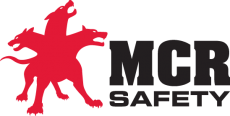
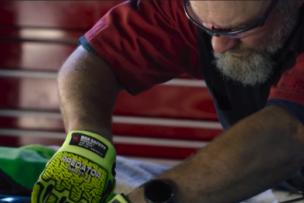
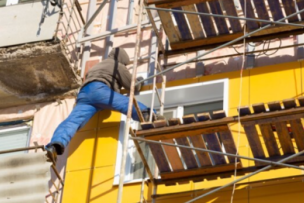
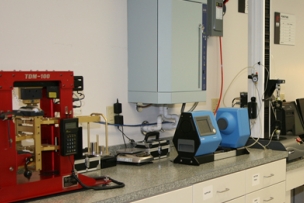

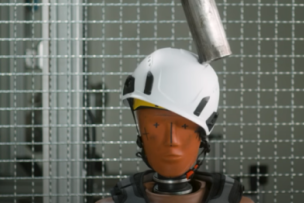
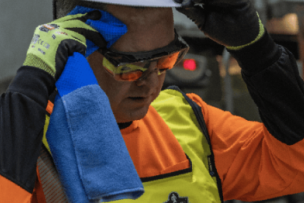
Talk to Us!
Leave a reply
Your email address will not be published. Required fields are marked *